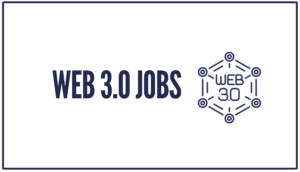The fast lane toward the development of the web has been coined as an outright phenomenon in today’s society. The incorporation of modern innovative technology and the redefining of organizations and communications are organized and communicated with individuals, leading to the creation of a mixture of both spectacular successes and failures. However, many users are completely unaware of the source of the information that led to the creation of the World Wide Web (WWW). In the field of the web and related technologies, significant progress has been made. Web 1.0 was referred to as a web of information or perception, Web 2.0 was referred to as a web of verbalization, and Web 3.0 was referred to as a web of affiliation.
So, you might be wondering, web 1.0 vs web 2.0 vs web 3.0? What are their differences? Why is there so much fuss about Web 3.0 nowadays? In this post, we will explain the differences between these three technologies.
Table of Contents.
1. Web 1.0
Web 1.0 is the early internet. It marks an age when content suppliers and users mostly communicated top-down and centralized. During this period, the web was seen as a continuation of traditional broadcasting media like television or radio. World Wide Web 1.0 was the first generation, also called the read-only web. It is a rudimentary form of unidirectional communication with static material, limited or no interactivity, and proprietary web apps. Before web 2.0, people were just given information via web pages without much participation.
Web 1.0 coding taught a generation to produce static material with tags and instructions that were styled, aligned, and colored. Then the web design environment evolved piece by piece. Editor-type tools abstracted HTML, so designers didn’t have to learn it. CSS and other layer languages made global coding easier.
a. Features of Web 1.0
- They can only read the content.
- In Web, 1.0, people can create a web presence and make information instantly accessible to everybody.
- It consists of static web pages and uses standard Hypertext Mark-Up Language.
- Web 1.0 began as a venue for businesses to broadcast their information, and users could merely search for and read it.
b. Examples of Web1.0
- Collections of GeoCities pages that users may still discover sprinkled throughout the web or in archives like the Wayback machine are one of the best visual examples of Web 1.0, the early read-only Internet.
Below is a screenshot of GeoCities’ Homepage in 1999 (Thanks to Wayback Machine).

- Another example is found in e-commerce. A Web 1.0 e-commerce store would be nothing more than a catalog of items and services. There may be a beautifully designed button for the user to order, or there may simply be an email address.
Below is a screenshot of Amazon taken in 1999 (Thanks to Wayback Machine).

- Web 1.0 sites include MySpace and LiveJournal. These websites were primarily personal and lacked the corporate aspect that modern websites have.
c. Limitations of Web 1.0:
- Humans can solely understand web 1.0 pages; they lack machine-readable content.
- The webmaster is exclusively responsible for user updates and content management on the website.
- Due to the lack of dynamic representation, no web console was accessible for conducting dynamic events.
2. Web 2.0
Web 2.0 started around 2004 as a web-as-platform in which users were able to abandon many of the previously employed controls. In other words, Web 2.0 users have increased involvement in the website with less control. Web 2.0 is not simply a new version of web 1.0; it also refers to flexible web design, creative reuse, updates, collaborative content creation, and modification in web 2.0. Web 2.0 enables user-generated material to be viewed instantly by millions of people worldwide; this unprecedented reach has resulted in an explosion of this type of content in recent years. Web 2.0’s exponential expansion has been fueled by critical developments such as mobile internet access and social networking and the near-ubiquity of powerful mobile devices such as iPhones and Android-powered devices.

Features of Web 2.0:
- It allows the sorting of information and also permits users to retrieve and classify the information.
- Content that is dynamic and responsive to user input.
- Information is exchanged through review and online comments between the site owner and site visitors.
- Created APIs to enable self-use, for example, by a software application.
- Web access results in several concerns, ranging from the typical Internet user base to a broader range of users.
- While this enables meaningful debate and collaboration, it also increases the prevalence of “spamming” and “trolling” and may even serve as a forum for racial hate speech, cyberbullying, and defamation.
Examples of Web 2.0:
Examples of Web 2.0 include hosted services (Google Maps), web applications (Google Docs, Flickr), video sharing sites (YouTube), wikis (MediaWiki), blogs (WordPress), social networking (Facebook), folksonomies (Delicious), microblogging (Twitter), podcasting (Podcast Alley), and content hosting services.
Below are the first images of Reddit, (the new web 2.0 social media that allowed its users to interact with the website/service). These images were taken a few months after Reddit’s release in 2005. Screenshot thanks to WaybackMachine

Limitations of Web 2.0
- The constant Iteration cycle undergoes a continuous state of change and improvement.
- Introduction of ethical considerations in the development and use of web 2.0
- There is still a lack of connectivity and knowledge sharing amongst platforms across community boundaries.
Web 3.0
To help improve data discovery, automation, integration, and reuse across web applications, web 3.0 introduces the definition of data structure and links. Web 3.0 can increase data management, mobile internet accessibility, creativity and innovation, internationalization, consumer satisfaction, and social web cooperation.
Web 3.0 enables the web’s back-end to be upgraded after years of focusing on the front-end (Web 2.0 has mainly been about AJAX, tagging, and other front-end user-experience innovation). Web 3.0, on the other hand, is used to describe several different paths of web usage and interaction. Data is shared rather than owned. And services display diverse perspectives of the same web/data.
As viewed by Gary Hayes in 2006 (refer to the diagram below), Web 3.0 focuses on live data (the real-time co-creative web).

The Semantic Web (3.0) claims to organize “the world’s information” better than Google’s current engine schema. Web 3.0 is a web where websites and webpages are obsolete, data is shared rather than owned, and services display diverse versions of the same web or data. These services, whether apps or devices, must be focused on context and personalization, and both may be found utilizing the vertical search.
3.0 additionally allows for 3D mapping of data and users. This allows it to be used in VR or other metaverse entry points. 3.0 is a world of live data in many aspects.
Features of Web 3.0
- Semantic Web. The Semantic Web is responsible for the next stage of the Web’s evolution. It enhances online technologies in demand to generate, share, and connect material through search and analysis based on the ability to comprehend the meaning of words rather than on keywords or numbers alone.
- Artificial Intelligence (AI). By combining AI with natural language processing, computers will be able to discern information just like humans in Web 3.0, allowing them to give faster and more relevant results to their users. They get increasingly intelligent due to the demands placed on them by users.
- 3D Graphics. Three-dimensional design is becoming increasingly popular in websites and services in the Web 3.0 era. 3D graphics can be used in various Web 3.0 applications such as museum tours, computer games, e-commerce, geographical contexts, and so on.
- Connectivity. Because of semantic metadata, information on Web 3.0 is more connected than ever before. This results in an enhanced user experience that takes advantage of all of the available data by connecting users to other systems.
Examples of Web 3.0
- Web 3.0 has fundamentally altered how social networks operate. With the use of blockchain, social platforms will be completely unrestricted. Anyone is welcome to join regardless of their geographical limits.
- Sapien is a one-of-a-kind example of Web 3.0. It is a decentralized social news platform that leverages Ethereum’s blockchain technology. Additionally, it is highly customizable. It is an excellent alternative to Google or Facebook when it comes to social news.

4. Differences between Web 1.0, 2.0 and 3.0
Below is a table describing the differences between Web 1.0 vs, Web 2.0, vs Web 3.0.
| Web 1.0 | Web 2.0 | Web 3.0 |
| HTML/Portals | XML / RSS | RDF / RDFS / OWL |
| The Hypertext Web | The Social Web | The Semantic Web |
| Read Only | Read & Write Web | Executable Web |
| Static Content | Dynamic Content | Web 3.0 is curiously undefined. |
| Web Forms | Web Applications | Smart Applications |
The main difference between Web 1.0, Web 2.0, and Web 3.0 is that Web 1.0 is considered a read-only web that focuses on the producer’s content originality. While Web 2.0 emphasizes user and producer creativity, and Web 3.0 emphasizes linked data sets.

Nilesh Katuwal
Writes about blockchain, games, NFTs, DeFi, Metaverse, and Crypto.


